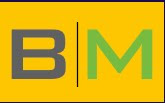COMPETITIVE ADVANTAGE:
Competitive advantage theory suggests that states and businesses should pursue policies that create high-quality goods to sell at high prices in the market. Competitive advantage rests on the notion that cheap labor is ubiquitous and natural resources are not necessary for a good economy. Competitive advantage attempts to correct for this issue by stressing maximizing scale economies in goods services that garner premium prices.
WHEN IT OCCURS:
Competitive advantage occurs when an organization acquires or develops an attribute or combination of attributes that allows it to outperform its competitors. These attributes can include access to natural resources, such as high grade ores or inexpensive power, or access to highly trained and skilled personnel human resources. New technologies such as robotics and information technology either to be included as a part of the product, or to assist making it.
ROLE OF INFORMATION TECHNOLOGY:
Information technology has become such a prominent part of the modern business world that it can also contribute to competitive advantage by outperforming competitors with regard to internet presence. From the very beginning, i.e. Adam Smith's Wealth of Nations, the central problem of information transmittal, leading to the rise of middle-men in the marketplace, has been a significant impediment in gaining competitive advantage. By using the internet as the middle-man, the purveyor of information to the final consumer, businesses can gain a competitive advantage through creation of an effective website, which in the past required extensive effort finding the right middle-man and cultivating the relationship.
PROCESS OF COMPETITIVE ADVANTAGE:
The term competitive advantage is the ability gained through attributes and resources to perform at a higher level than others in the same industry or market The study of such advantage has attracted profound research interest due to contemporary issues regarding superior performance levels of firms in the present competitive market conditions. "A firm is said to have a competitive advantage when it is implementing a value creating strategy not simultaneously being implemented by any current or potential player" Successfully implemented strategies will lift a firm to superior performance by facilitating the firm with competitive advantage to outperform current or potential players. To gain competitive advantage a business strategy of a firm manipulates the various resources over which it has direct control and these resources have the ability to generate competitive advantage. Superior performance outcomes and superiority in production resources reflects competitive advantage.
WHEN COMPETITIVE ADVANTAGE LEADS TO LEADERSHIP:
Above writings signify competitive advantage as the ability to stay ahead of present or potential competition, thus superior performance reached through competitive advantage will ensure market leadership. Also it provides the understanding that resources held by a firm and the business strategy will have a profound impact on generating competitive advantage. Business strategy as the tool that manipulates the resources and create competitive advantage, hence, viable business strategy may not be adequate unless it possess control over unique resources that has the ability to create such a unique advantage.
CONCLUSIONS:
Summarizing the view points, competitive advantage is a key determinant of superior performance and it will ensure survival and prominent placing in the market. Superior performance being the ultimate desired goal of a firm, competitive advantage becomes the foundation highlighting the significant importance to develop same.


 8:58 PM
8:58 PM
 BeliMurah's Online Store
BeliMurah's Online Store


 Posted in:
Posted in: 













0 comments:
Post a Comment